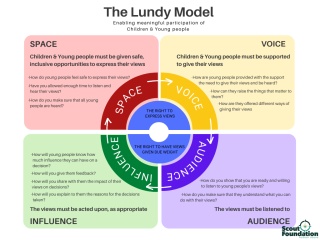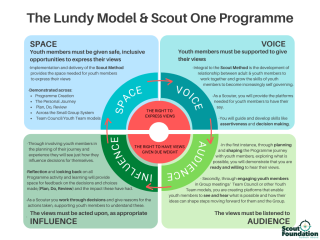The Lundy Model
Foreword by SFNI Programme Lead
The aim of Scouting is to develop the Social, Physical, Intellectual, Character, Emotional and Spiritual understanding, qualities and skills of young people. Through delivery of One Programme using the Scouting Method, a shared approach and platform enable the delivery of this aim.
A central tenant of what is delivered is in the involvement of youth members to work with adults and peers to develop the skills necessary to fulfil and realise their understanding and ability to realise these qualities along with their full potential.
The Scout Method places youth members at the centre of their Scouting Journey, helping to shape the skills necessary in having their own say and shaping their own experiences across this journey.
The Lundy Model provides a reference for how adult Scout members can understand and create opportunities for young people to fully participate in the experiences that will shape who they are. The One Programme sets out how Scouting ensures that the voice of youth members is heard, listened to, and acted upon to provide a genuine ‘youth led’ experience for youth members.
Using a collaborative approach between adult and youth member, provides the space and ability for youth members to be guided to learn participative skills such as- having a say in their own experiences, understanding what impacts on decisions made, development of confidence and assertiveness and recognising the impact of choices they have made.
Scouting Ireland Programme delivery exemplifies all that the Lundy Model proposes and understands to be important for developing youth participation. For us, as adult Scouters, our understanding of the need ‘youth led’ approach holds in Scouting delivery and the importance it plays in shaping those youth members we support and work with must never be underestimated.
Drew

Since 2014, the Lundy Model of child participation, based on four key concepts (Space, Voice, Audience and Influence), has been used and adopted by national and international organisations, agencies and governments to inform their understanding of children’s participation, generating a sea-change in global understanding of child rights-based participation for both policy and practice.
Click on the link below to find out more about the Lundy Model






